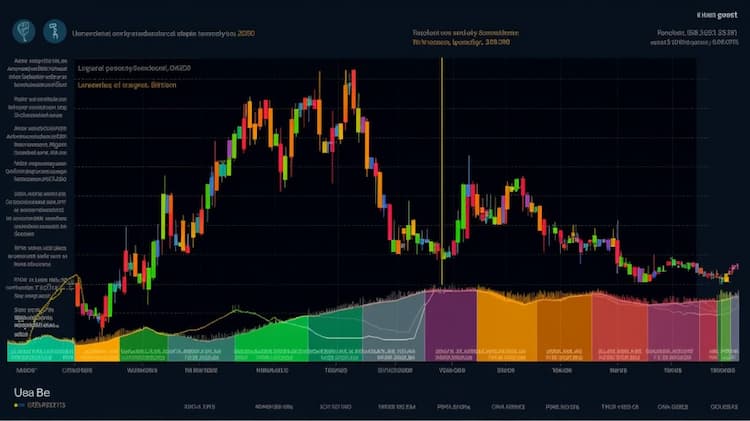
How does the EEV ETF work?
In the ever-evolving landscape of finance, Exchange-Traded Funds (ETFs) have become a popular investment option for both seasoned investors and newcomers alike. One ETF that has been gaining attention is the EEV ETF. In this article, we will delve into the workings of the EEV ETF, exploring its overview, underlying assets, benefits, and considerations for potential investors.
EEV ETF: Overview
Before we get into the nitty-gritty details, let's start with the basics. The EEV ETF, or the "Inverse MSCI Emerging Markets ETF," is designed to provide investors with inverse exposure to the MSCI Emerging Markets Index. In simpler terms, it aims to move in the opposite direction of this index.
The MSCI Emerging Markets Index tracks the performance of stocks in emerging markets, which are typically characterized by their rapid economic growth and development. By investing in the EEV ETF, investors are essentially betting against the performance of these emerging markets.
EEV ETF: Underlying and Exposure - What Does It Track and How?
To understand how the EEV ETF works, it's crucial to grasp its underlying assets and exposure. The fund achieves its inverse exposure to the MSCI Emerging Markets Index through various financial instruments, such as futures contracts and swaps.
Futures contracts allow the fund to profit from declines in the index's value. When the index goes down, the value of the futures contracts held by the EEV ETF increases, generating gains for investors. This inverse relationship makes the EEV ETF an attractive option for those who want to hedge their investments in emerging markets or profit from potential downturns.
Moreover, the EEV ETF may also utilize swaps to achieve its inverse exposure. Swaps are financial agreements between two parties to exchange cash flows. In this case, the EEV ETF would enter into swap agreements that pay out when the MSCI Emerging Markets Index falls in value. These swaps can be an effective way to achieve the fund's investment objective.
 EEV overlap How does work the EEV ETF?
EEV overlap How does work the EEV ETF?
EEV ETF: Benefits of Investing
Investing in the EEV ETF offers several advantages for those looking to hedge against or profit from declining emerging markets. Here are some key benefits:
Diversification: The EEV ETF provides exposure to a wide range of emerging market assets, allowing investors to diversify their portfolios effectively.
Inverse Correlation: This fund has an inverse correlation with the MSCI Emerging Markets Index, making it an excellent tool for hedging against potential losses in emerging market investments.
Liquidity: Being an ETF, the EEV ETF is traded on stock exchanges, providing liquidity to investors. They can buy or sell shares of the fund throughout the trading day.
Cost-Efficiency: ETFs are known for their lower expense ratios compared to mutual funds, making them a cost-effective investment choice.
EEV ETF: Considerations Before Investing
While the EEV ETF offers unique benefits, it's essential to consider certain factors before investing:
Risk: Inverse ETFs like EEV are designed to move in the opposite direction of their underlying index. However, this also means they can incur losses when the index performs well. Investors should carefully assess their risk tolerance.
Short-Term Investment: EEV ETFs are typically used as short-term trading or hedging instruments. Holding them for extended periods may not align with their intended purpose.
Tracking Error: Due to the complex nature of inverse ETFs and the use of financial derivatives, there can be tracking errors. These errors may cause the fund's performance to deviate from its intended inverse exposure over time.
Volatility: Emerging markets are known for their volatility. The EEV ETF can magnify this volatility, making it a high-risk investment.
In conclusion, the EEV ETF provides investors with a unique way to hedge against or profit from declines in emerging markets. Understanding its inverse exposure, benefits, and associated considerations is crucial before deciding to invest. Like any investment, it's advisable to consult with a financial advisor and conduct thorough research to determine if the EEV ETF aligns with your financial goals and risk tolerance.
Conclusion
The EEV ETF is a specialized investment vehicle that can play a valuable role in a diversified portfolio. With its inverse exposure to the MSCI Emerging Markets Index, it offers a strategic option for investors seeking to mitigate risks or capitalize on potential downturns in emerging markets. However, it's vital to approach this ETF with a clear understanding of its unique characteristics and the associated risks. Always consult with a financial professional before making investment decisions.
Sources
EEV ETF issuer
EEV ETF official page
FAQ
What is the EEV ETF?
The EEV ETF is an exchange-traded fund that provides investors with exposure to a specific sector.
What is the underlying index that the EEV ETF aims to track?
The EEV ETF aims to track the performance of a specific index, which includes companies involved in its respective sector.
What types of companies are included in the EEV ETF?
The EEV ETF includes companies from its focused industry.
How does the EEV ETF work?
The EEV ETF functions by pooling investors' capital to purchase a diversified portfolio of sector-related stocks.
What are the advantages of investing in the EEV ETF?
Investing in the EEV ETF offers exposure to a specialized sector with potential for growth.





